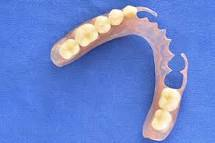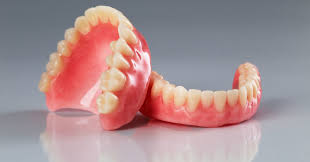Dental Implants
Dental implants are used to permanently replace one or more missing teeth. Unlike bridges or dentures, this restoration replaces your entire tooth, from root to crown. It is the next best option for natural teeth.
A traditional dental implant consists of a post, which is placed within your jawbone and mimics your tooth root, an abutment, and a crown. The crown is the visible part of your tooth, which will be custom designed to look and feel like your surrounding teeth.
The Benefits of Dental Implants:
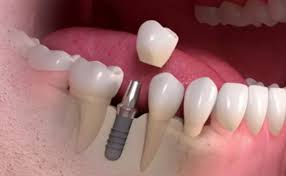
Chair Side ZOOM! Whitening
Zoom Teeth Whitening is a form of laser treatment. It lightens the staining or discoloration of tooth enamel. It is a simple, non-invasive procedure that usually takes between 45 minutes to an hour.
The process combines a special lamp, referred to as a Zoom light or Zoom laser, with a hydrogen peroxide-based whitening gel. Using both, the dentist will bleach each tooth and produce a brighter smile by the end of the treatment.
HOW DOES IT WORK?
A high concentration of hydrogen peroxide is used in the gel that covers your teeth. When the peroxide comes into contact with the intense light emitted from the lamp, it breaks down. Then it dissolves a thin layer over top of the enamel and releases oxygen into the teeth. The oxygen then helps to flush out and get rid of tooth discoloration that has set in.
Think of it like you're giving your teeth a chemical bath. As an added bonus, Zoom whitening does not affect the physical structures of your teeth at all. This low-risk procedure is of the best teeth whitening options out there.

Tooth Colored Composite Fillings
Today, more patients ask their dentists about white fillings because they want their teeth to look natural when they laugh, talk and smile. White fillings, also called composite fillings, are made from tooth-colored materials that restore the natural appearance of a decayed or previously filled tooth. Because they blend well with tooth enamel and don't look like fillings, they are the best option to preserve the aesthetics as well as the health of your front and back teeth.
A composite filling usually requires only one visit, during which the tooth is prepared and restored. An advantage of composite fillings, as compared with other dental restorations, is that they require less of the healthy part of a tooth to be removed to hold the filling in place. This is due to composite materials' ability to bond to teeth adhesively.
Some white fillings may be more expensive than other dental materials, but most patients find these natural-looking restorations well worth the additional cost. White fillings, like other dental materials, may require periodic replacement. If the edge of the filling eventually pulls away from the tooth, bacteria can get between the filling and the enamel and eventually may cause decay. Tooth decay over time may develop elsewhere on the tooth. Regular dental checkups are important because they allow the dentist to detect a problem in the early stage.
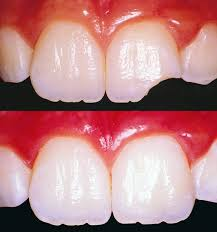
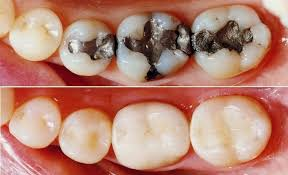
Dental Crowns
A crown is a cover or “cap” your dentist can put over a tooth.
A crown restores a damaged or missing tooth to its normal shape, size and function. A crown can protect the tooth or improve the way it looks.
Your dentist may recommend a crown to:
What is your crown made from?
Crowns can be made from several types of materials. Metal alloys, ceramics, porcelain, porcelain fused to metal or composite resin may be used. When a crown is made, the material often is tooth colored to blend in with your natural teeth.
You want your crown to look natural and fit comfortably in your mouth. To decide which material to use for your crown, you and your dentist will consider many factors, such as:
the tooth’s location and function
the position of the gum tissue
the amount of tooth that shows when you smile
the color or shade of the surrounding teeth
STEPS OF PLACING THE CROWN:
It usually takes two dental visits to complete the treatment. When a crown is placed over a natural tooth, several steps are involved:
Your dentist prepares the tooth by removing the outer portion, including any decay, so the crown will fit. If additional tooth structure is needed to support the crown, your dentist may build up the core of the tooth.
An impression is made to create an exact model of your tooth and sent out to a dental laboratory.
To protect your tooth while the permanent crown is being made, a temporary crown is placed. Making the permanent crown usually takes 2 to 3 weeks. While you have a temporary crown, the tooth may be sensitive to hot and cold. Avoid chewing gum and eating sticky foods during this time. It is essential to remember that a temporary crown is in fact "temporary" and you must return for your permanent crown seat appointment.
When the permanent crown is ready, your dentist places it in your mouth and makes the necessary adjustments. When you and your dentist are happy with how it looks and feels, the crown is cemented into place.
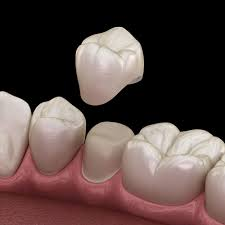
Porcelain Veneers
What are veneers?
Dental veneers are thin, tooth-colored shells that are attached to the front surface of teeth to improve their appearance. They’re often made from porcelain or resin-composite materials and are permanently bonded to your teeth.
Veneers can be used to treat a number of different cosmetic concerns, including chipped, broken, discolored, or smaller-than-average teeth.
Some people may only get one veneer in the case of a broken or chipped tooth, but many get between six to eight veneers in order to create an even, symmetrical smile. The top front eight teeth are the most commonly applied veneers.
Applying traditional dental veneers typically involves grinding down the tooth structure, sometimes removing some of the tooth even past the enamel. This allows for proper placement, but it’s also an irreversible procedure that can be painful to go through and often requires a local anesthetic.
No-prep veneers, on the other hand, may require some tooth preparation or alteration, but these alterations are minimal. Instead of removing layers of tooth under the enamel, no-prep veneers only affect the enamel. In many cases, no-prep veneers don’t require local anesthetics.
Veneers aren’t the same as tooth implants or crowns. Veneers cover the front surface of the tooth. Implants, on the other hand, replace the entire tooth. Crowns also encase the entire tooth, while veneers only cover the front surface of the tooth (which is visible with a smile).
What are the benefits of dental veneers?
The biggest benefit to veneers is improving the appearance of your teeth, giving you a brighter and more even smile. Dental veneers are often used to treat the following cosmetic occurrences:
Veneers can last for more than a decade, depending on the type of veneer you choose, making them a semi permanent investment that can make you more confident in your smile.
Your dentist will often take X-rays to evaluate your teeth’s health. She will look for signs of tooth decay, gum disease, or the need for root canals. If you have any of these conditions, you may not be a candidate for veneers.
To get accurate sizing for your veneers your dentist trims down about a half a millimeter of your tooth (they remove the enamel using a grinding tool) before they take a mold (impression) of your teeth. This mold is then sent off to the lab for the creation of your veneers.
How are veneers put on teeth?
It typically takes between two and three weeks after your dentist creates your mold to get your veneers back from the lab.
Once your veneers are in, you can schedule an appointment to have them placed. At this appointment, your dentist evaluates the fit, shape, and coloration of the veneers to make sure they’re perfect for you.
Next, your dentist thoroughly cleans your teeth. This is important, as it keeps bacteria from being trapped under the veneer and causing decay. After they do this, they use the grinding tool to create a rougher texture on each tooth on which a veneer is to be applied. This makes it easier for the veneer to stick to the tooth.
Your dentist then uses a dental cement to bind the veneer to the tooth. They’ll use ultraviolet light to harden this cement quickly, and once you leave the office, your new smile is ready to go!
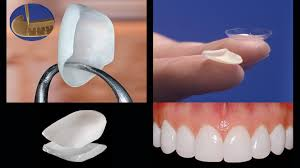
Dental Bridges
What are dental bridges?
If you have one or more missing teeth, a dental bridge can fill the gap with one or more artificial (false) teeth. A bridge is typically made of crowns on either side of the missing tooth or teeth supporting the pontic (false tooth) and is cemented in place.
Who needs a dental bridge?
Dental bridges can help if you have a missing tooth or teeth. The most common causes of missing teeth are tooth decay, gum disease and injury. Or you may have been born with missing teeth due to a congenital condition. To get a dental bridge, you need healthy teeth on either side of the missing ones.
Why do I need a dental bridge?
Your teeth work together. If a tooth is missing, nearby teeth can move into the empty space. The teeth in your opposite jaw can also move up or down toward the space. This can cause:
A typical dental bridge has:
Abutment teeth: A dental professional places two crowns on the teeth on either side of the gap. These anchoring teeth, or supporting teeth, can be your natural teeth or dental implants.
Pontics: This false tooth (or teeth) fills in the gap and attaches to the crowns.
What happens during a procedure for a traditional dental bridge?
You’ll typically need at least two appointments:
Abutment teeth preparation: During your first visit, your dentist reshapes the abutment teeth. She will remove part of the enamel and dentin, so there’s room for the crown.
Impressions: Your dentist takes impressions of your teeth. A dental laboratory uses the mold as a model to create your bridge, false teeth and crowns. You’ll have a temporary bridge to protect the exposed areas in your mouth while the lab makes your bridge.
Permanent bridge placement: During your second visit, your dentist removes the temporary bridge and places the permanent bridge. She will carefully check the bridge and make any needed adjustments to make sure it fits you comfortably.
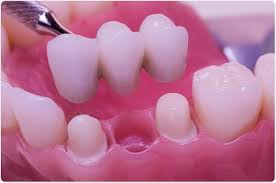
Gum Disease Treatment
To determine whether you have periodontitis and how severe it is, your dentist will:
Review your medical history to identify any factors that could be contributing to your symptoms, such as smoking or taking certain medications that cause dry mouth.
Examine your mouth to look for plaque and tartar buildup and check for easy bleeding.
Measure the pocket depth between your gums and teeth by placing a dental probe beside your tooth beneath your gum line, usually at several sites throughout your mouth. In a healthy mouth, the pocket depth is usually between 1 and 3 millimeters (mm). Pockets deeper than 4 mm may indicate periodontitis. Pockets deeper than 5 mm cannot be cleaned well.
Take dental X-rays to check for bone loss in areas where your dentist observes deeper pocket depths.
Your dentist may assign a stage and a grade to periodontitis based on the severity of the disease, the complexity of treatment, your risk factors and your health.
The goal of periodontitis treatment is to thoroughly clean the pockets around teeth to prevent the damage to the surrounding bone. You have the best chance for successful treatment when you also adopt a daily routine of good oral care, manage health conditions that may impact dental health and stop tobacco use.
Nonsurgical treatments
If periodontitis isn't advanced, treatment may involve less invasive procedures, including:
Scaling: Scaling removes tartar and bacteria from your tooth surfaces and beneath your gums. It may be performed using instruments, a laser or an ultrasonic device.
Root planning: Root planning smooth's the root surfaces, discouraging further buildup of tartar and bacteria, and removes bacterial byproducts that contribute to inflammation and delay healing or reattachment of the gum to the tooth surfaces.
Antibiotics: Topical or oral antibiotics can help control bacterial infection. Topical antibiotics can include antibiotic mouth rinses or insertion of gels containing antibiotics in the space between your teeth and gums or into pockets after deep cleaning. However, oral antibiotics may be necessary to completely eliminate infection-causing bacteria.
If you have advanced periodontitis, you may require a referral to a periodontist ( a gum specialist) for further evaluation and treatment.
Try these measures to reduce or prevent periodontitis:
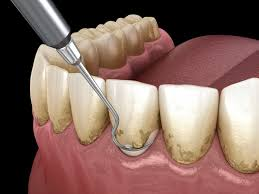
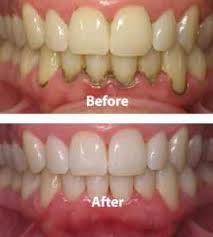
Root Canals
What is a root canal?
A root canal is a dental procedure involving the removal of the soft center of the tooth, the pulp. The pulp is made up of nerves, connective tissue, and blood vessels that help the tooth grow.
In the majority of cases, a general dentist or endodontist will perform a root canal while you’re under local anesthesia.
When is a root canal needed?
A root canal is performed when the soft inner part of a tooth, known as the pulp, is injured or becomes inflamed or infected.
The crown of the tooth — the part you can see above your gums — can remain intact even if the pulp is dead. Removing injured or infected pulp is the best way to preserve the structure of the tooth.
Common causes of damage to the pulp include:
deep decay due to an untreated cavity
multiple dental procedures on the same tooth
a chip or crack in the tooth
an injury to the tooth (you might injure a tooth if you get hit in the mouth; the pulp can still be damaged even if the injury doesn’t crack the tooth)
The most common symptoms of damaged pulp include pain in your tooth, and swelling and a sensation of heat in your gums. Your dentist will examine the painful tooth and take X-rays to confirm the diagnosis. Your dentist may refer you to an endodontist (root canal specialist) for a complicated or difficult root canal treatment.
Risks of a root canal
A root canal is performed in an effort to save your tooth. Sometimes, however, the damage is too deep or the enamel is too frail to withstand the procedure. These factors can lead to loss of the tooth.
Another risk is developing an abscess at the root of the tooth if some of the infected material remains behind or if the antibiotics aren’t effective.
If you’re apprehensive about a root canal, you can talk to your dentist about an extraction instead. This often involves placing a partial denture, bridge, or implant in place of the damaged tooth.
What happens after a root canal?
A root canal is considered a restorative procedure. Most people who undergo the procedure are able to enjoy the positive results for the rest of their lives. Typically, a tooth that had root canal therapy is rebuilt with permanent restorative material and protected by a crown. Still, how long results last depends on the way you take care of your teeth.
Just as the rest of your teeth depend on good oral hygiene habits, your restored tooth requires regular brushing and flossing as well.
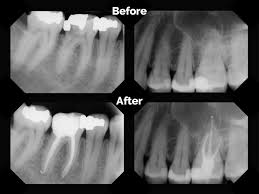
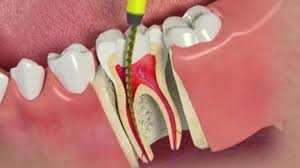
Complete and partial dentures
A denture is a removable dental appliance used as a replacement for missing teeth and surrounding tissue. They are made to closely resemble your natural teeth and may even enhance your smile.
There are two types of dentures – complete and partial dentures. Complete dentures are used when all of the teeth are missing, while partial dentures are used when some natural teeth remain. A Partial denture not only fills in the spaces created by missing teeth, it prevents other teeth from shifting.
A Complete denture may be either “conventional” or “immediate.” A conventional type is made after the teeth have been removed and the gum tissue has healed, usually taking 4 to 6 weeks. During this time the patient will go without teeth. Immediate dentures are made in advance and immediately placed after the teeth are removed, thus preventing the patient from having to be without teeth during the healing process. Once the tissues shrink and heal, adjustments will have to be made.
Dentures are very durable appliances and will last many years, but may have to be remade, repaired, or readjusted due to normal wear.
When to Get Dentures
All teeth have been lost in the upper or lower jaw – Complete Denture. Several teeth in the upper or lower jaw have been lost – Partial Denture. Dentures can help to improve your smile and facial appearance, improve your chewing, speech, and digestion.
The Process of Getting Dentures
The process of getting dentures requires several appointments, usually over several weeks. Highly accurate impressions (molds) and measurements are taken and used to create your custom denture. Several “try-in” appointments may be necessary to ensure proper shape, color, and fit. At the final appointment, your dentist will precisely adjust and place the completed denture, ensuring a natural and comfortable fit.
It is normal to experience increased saliva flow, some soreness, and possible speech and chewing difficulty, however this will subside as your muscles and tissues get used to the new dentures.
You will be given care instructions for your new dentures. Proper cleaning of your new dental appliance, good oral hygiene, and regular dental visits will aid in the life of your new dentures
